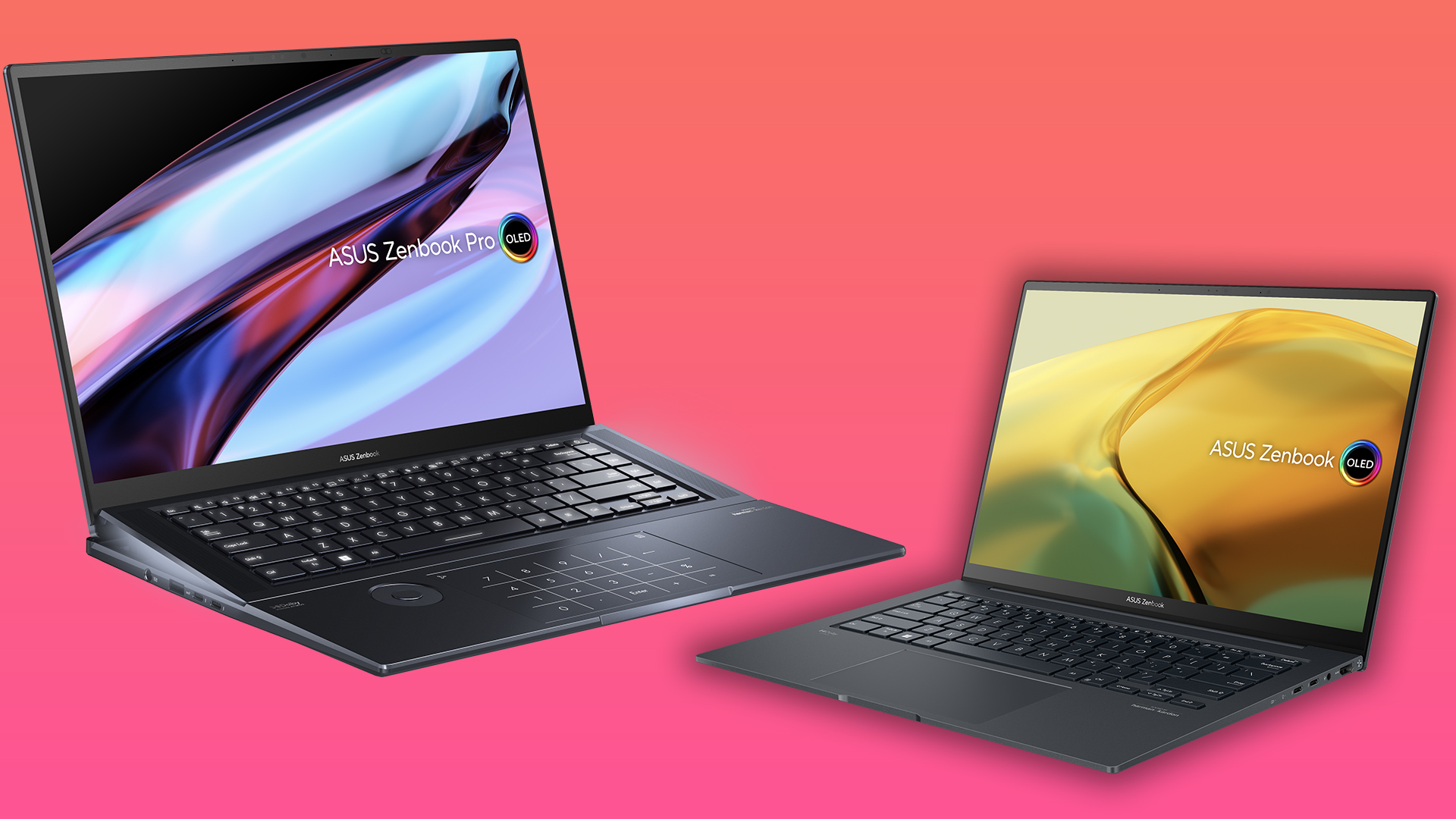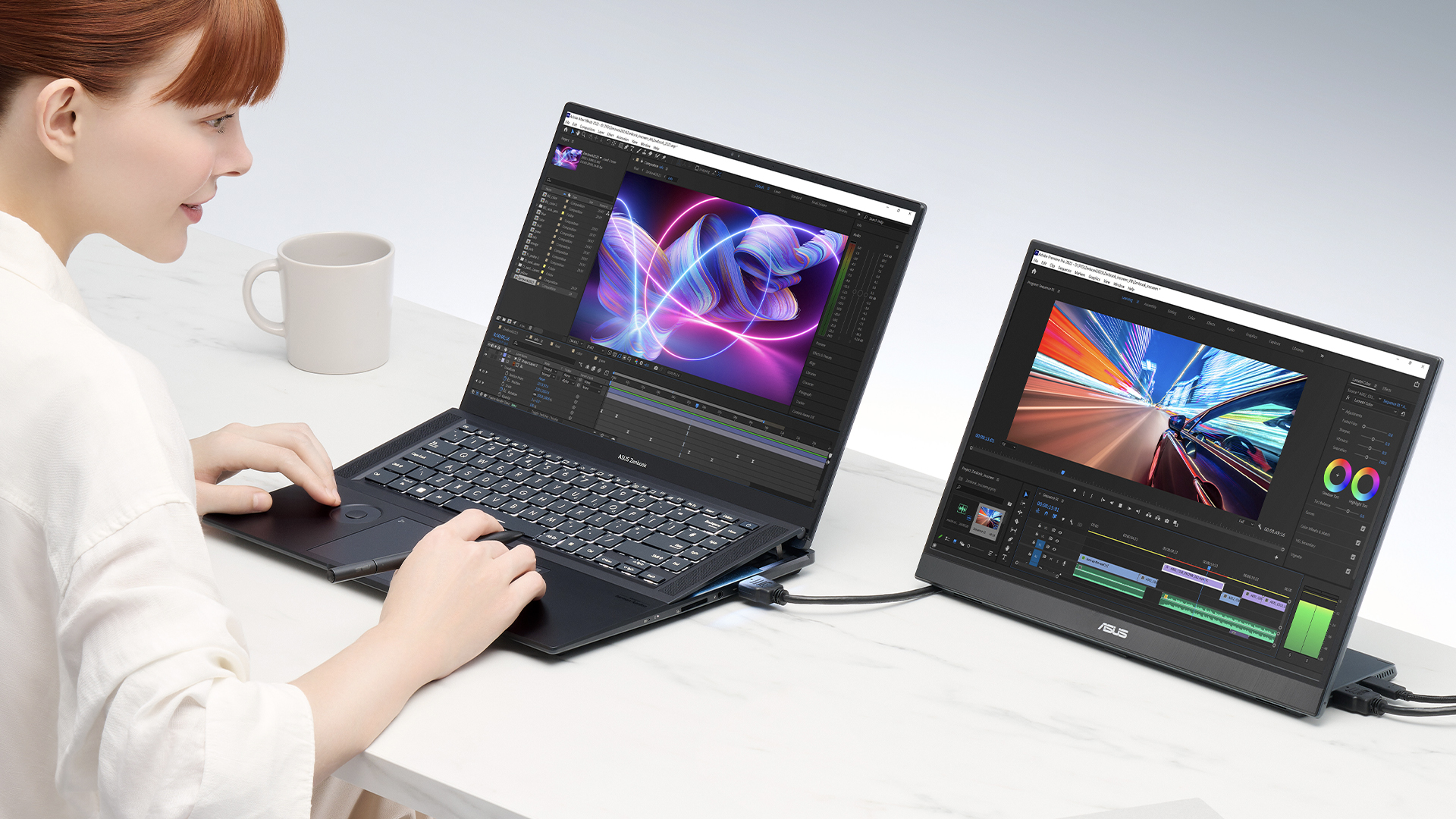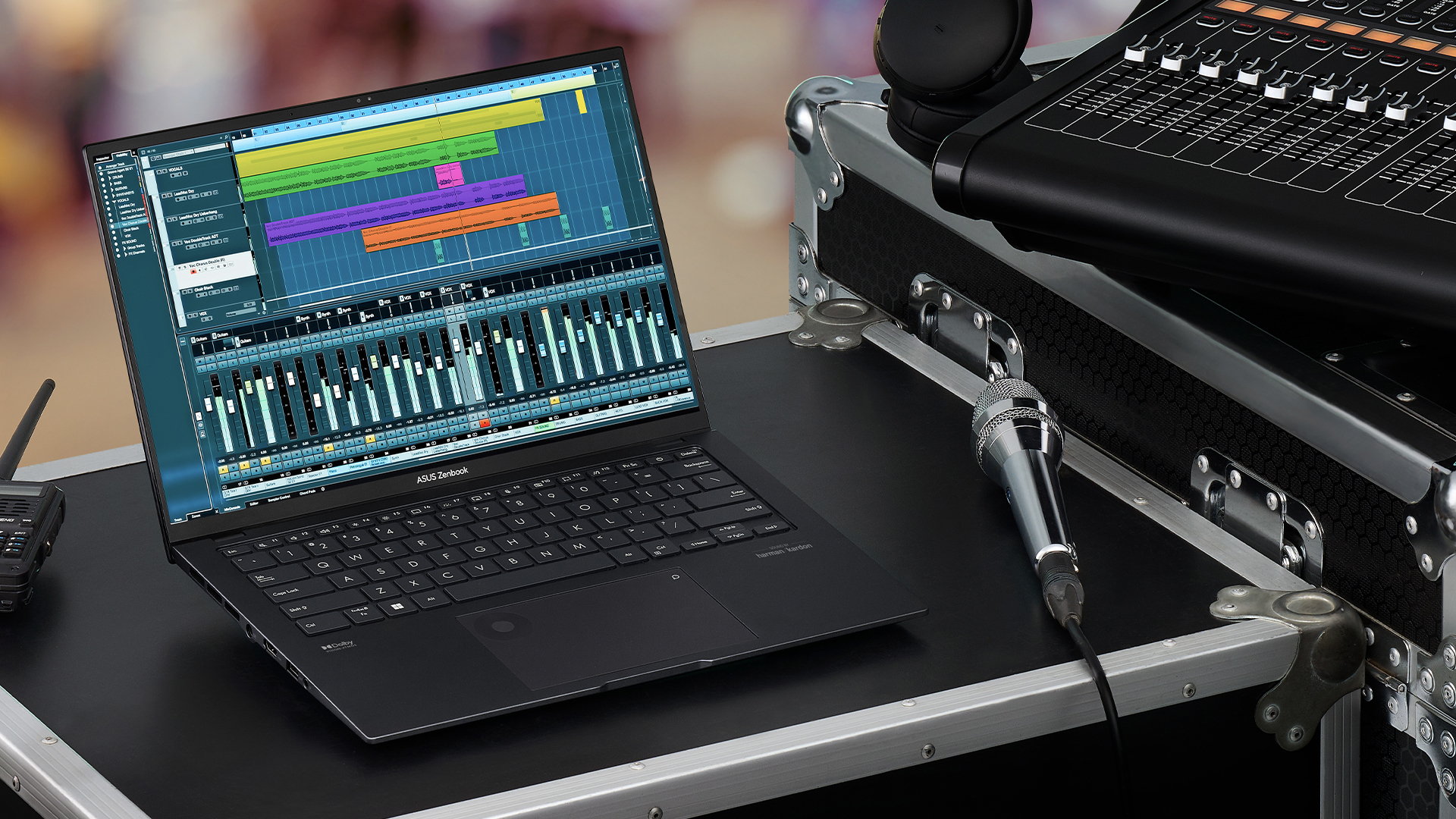New Asus Zenbooks double down on OLED — and that’s not even the best part
2023 is going to be a good year for Zenbooks

Asus has just revealed its latest line of Zenbook laptops at CES 2023 — committing fully to OLED displays, 13th Gen Intel Core CPUs, and RTX 40 Series GPUs. But out of all the big updates, the most significant is a reinvented System-on-Module (SoM) design.
Now I get that it sounds a little boring, no matter how much Asus has tried to jazz it up by calling it “Supernova.” But what it means is that the motherboard core area of the Zenbook 16X is dramatically smaller than last year’s model.
That leads to improved cooling efficiency, lower running temperatures, and the ability to pack more GPU components in there and reach a higher Thermal Design Power (TDP) value. Translation: a lot more power potential.
Asus Zenbook Pro 16X OLED

Let’s get into the nitty gritty about this new development. With this reduction of SoM size and the use of liquid metal cooling, temperatures in high performance mode are reduced by 7°C. Plus, with that smaller size, the total TDP power goes way up to 155W — meaning you can squeeze more performance out of the Intel Core i9-13905H processor, NVIDIA GeForce RTX 40 Series Laptop GPU, 32 GB of fast LPDDR5X DRAM, and up to a 2TB PCIe 4.0 SSD.
This takes the creator-centric laptop to a new level, which maintains a lot of what we loved about previous models, while adding some more welcome upgrades too, such as the 3.2k 120Hz OLED display with a 100% DCI-P3 color gamut. The Active Aerodynamic System is still going strong, while angling the keyboard for an improved typing experience, while all being crammed into a sleek CNC-milled Aluminum unibody coming in at 16.9mm thin.
Oh, and we can’t forget about the Asus dialpad, the 84% larger haptic touchpad, a beasty 96Wh battery and the utilization of two Thunderbolt 4 ports, SD card reader and HDMI 2.1.
The 14-inch models get a healthy update too

While the Zenbook Pro 16X OLED is the star of the show here, the 14-inch laptops have gone through some significant changes too — some of which show that Asus has been listening to some of our problems with previous models!
Stay in the know with Laptop Mag
Get our in-depth reviews, helpful tips, great deals, and the biggest news stories delivered to your inbox.
For example, the entry level Zenbook 14X OLED has a bigger 14.5-inch display with 120Hz refresh rate, an upgraded FHD webcam, a huge jump from integrated graphics to a studio-grade RTX 3050 GPU, alongside up to an Intel Core i9-13900H, 32GB of LPDDR5 RAM and a 1TB SSD. Asus also promises that the 70Wh battery lasts longer too. Expect vastly improved numbers than the test results we saw in last year’s Zenbook 14X OLED Space Edition.
Plus, the chassis (available in beige or gray) is now a little more premium to the touch, thanks to a new eco-friendly plasma electrolytic oxidation (PEO) coating process that creates a ceramic-like finish.
Need a little more performance in a similar-sized chassis? The Zenbook Pro 14 OLED or Zenbook Pro 14 Duo OLED. As you already know, the key difference here is the second screen on the Duo, which shifts the touchpad to the right (something we’re split about in the office, as you can read in our previous Zenbook Pro 14 Duo review), whereas the standard Pro 14 OLED has a DialPad.
Let’s look past these and look at the specs they share: WiFi 6E, a Pantone-validated 16:10 2.8K OLED panel with 120Hz refresh rate, dedicated RTX 40-series GPU, up to an Intel Core i9-13900H CPU, 16GB DDR5 RAM with an additional 32GB SO-DIMM slot, and a 2TB SSD.
Outlook
With the newest crop of Zenbooks, Asus has seen gold in its OLED options and committed to it, while trying to fix some of our common gripes with these laptops, such as battery life and the webcam quality.
Whether or not Asus sticks the landing is something for when we go hands-on with these systems. But color us excited for the future of Zenbook.

Jason brought a decade of tech and gaming journalism experience to his role as a writer at Laptop Mag, and he is now the Managing Editor of Computing at Tom's Guide. He takes a particular interest in writing articles and creating videos about laptops, headphones and games. He has previously written for Kotaku, Stuff and BBC Science Focus. In his spare time, you'll find Jason looking for good dogs to pet or thinking about eating pizza if he isn't already.
